10 lesser-known U.S. coins
Meet the double-eagle, stella, half-dime, and more


President Obama recently suggested the retirement of the penny as a way of reducing the federal budget, since it costs nearly two and a half times its face value to mint. While that may not happen any time soon, it's still interesting to look at some other coins in U.S. history that were retired, were exceptionally rare, or never even made it off the drawing board...
1. BULLION COINS

While most of America's coinage is made up of a variety of materials, bullion coins are made up entirely of precious metals. Currently, there are four kinds: Silver Eagles, Gold Eagles, Platinum Eagles, and Gold Buffalos.
The Week
Escape your echo chamber. Get the facts behind the news, plus analysis from multiple perspectives.

Sign up for The Week's Free Newsletters
From our morning news briefing to a weekly Good News Newsletter, get the best of The Week delivered directly to your inbox.
From our morning news briefing to a weekly Good News Newsletter, get the best of The Week delivered directly to your inbox.
Each are legal tender and have their own face value: Silver Eagles are $1, Gold Eagles are $5, $10, $25, or $50 (depending on weight), Platinum Eagles are $100, and Gold Buffalos are $50. However, it would be a really horrible idea to spend them — the coins are intended to be bought and sold at the current market value of the metal from which they were created (which is far, far higher than the face value).
Bullion coins aren't circulated and can't be purchased from the U.S. Mint directly. Instead, a network of authorized sellers can hook you up ... to the tune of the market value of the metal, plus a little extra for the convenience of having it in coin form.
2. UNIONS
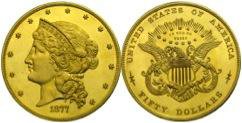
After the gold rush of 1849, Californians had a bit of a money problem. Previously, the region had solely used its own specially-minted coins for currency. Once California reached statehood, however, this became troublesome, because the U.S. Mint didn't issue higher-value coins and paper currency was still very slow to circulate out west.
A free daily email with the biggest news stories of the day – and the best features from TheWeek.com
To combat this, Congress considered creating two new coins: the $100 Union and $50 Half-Union. The proposal failed, however, and neither coin saw circulation. But in 1910, a private collector came forward with two gold Half-Unions, both marked with an 1877 date (nearly twenty years after they were rejected).
The coins are kind of a mystery. No one knows exactly why they were created (or when, since the 1877 date is possibly incorrect), but several other collectors have since found copper Half-Unions made using the same die. The two original Half-Unions are now in the Smithsonian.
3. EAGLE COINS

From 1792 to 1933, America issued gold coins known as eagles (not to be confused with the bullion coins mentioned previously). The longest-lived obsolete coin in U.S. history, eagles were actually a series of related denominations. The eagle itself was worth $10, but the Mint also produced the double-eagle ($20), half-eagle ($5), and quarter-eagle ($2.50).
In 1933, however, President Franklin D. Roosevelt, who believed that people hoarding gold might prolong the Great Depression, signed Executive Order 6102, which made it illegal for individuals to possess more than $100 worth of gold. Any amounts in excess were turned over to the government for a cash equivalent. This effectively ended production of the eagle coins, as the Mint started melting down its own supplies to assist.
4. STELLA
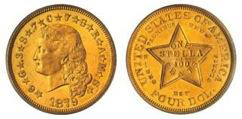
In the 1860s, several European countries banded together to create a universal currency, sort of like an early attempt at the Euro. This group called itself the Latin Monetary Union (or LMU) and created standards for gold and silver coins that could be minted by the individual countries but were also easily exchanged on a one-for-one basis.
The U.S. briefly considered joining the LMU and produced a concept coin called the Stella. Valued at $4 US, the Stella would have been America's version of the LMU gold coin. However, Congress rejected both the Stella and the LMU (which disbanded after World War I), so the coin went unused.
5. THREE-DOLLAR PIECE
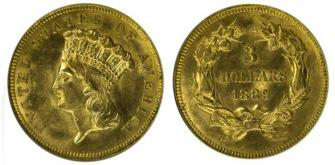
From 1854 to 1889, the U.S. Mint produced a gold coin worth $3, which is a bit surprising, since they already had the aforementioned quarter-eagle worth $2.50. Why did they feel the need to create a separate coin for the extra 50 cents? The answer is stamps.
More specifically, for buying a whole lot of stamps. In the mid-1800s, the U.S. Postal Service actually lowered the price of stamps from five cents to three. Thus, it was widely assumed (though never directly stated) that, essentially, the sole purpose of $3 coins was for businesses to conveniently buy 100 stamps in a single transaction. Obviously, they weren't much use for anything else. Since stamps couldn't stay the same price forever, the coin was retired within a few decades.
(For the record, a three-dollar piece would buy six and a half stamps today.)
6. TWENTY-CENT PIECE
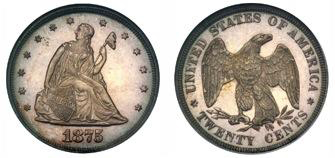
The shortest-lived circulated coin in U.S. history, the twenty-cent piece only lasted from 1875 to 1878. Once again, this was America attempting to keep parity with Europe — France, in particular. Their twenty-franc piece was approximately the same size and material as the twenty-cent piece, and so the two could, in theory, be exchanged equally.
In reality, this was almost never done. Though francs were a popular reserve currency at the time, the average citizen didn't have much of a need for a twenty cent coin, especially since quarters were already well-established.
7. HALF-DIME
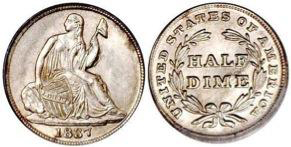
Long before nickels were ever a thing, the U.S. Mint produced an entirely different five cent coin known as the half-dime. They were, in fact, about half the size of a dime as well as being half the value. From 1792 to 1873, silver half-dimes were produced to fill the gap between pennies and dimes, because no one likes a pocket full of pennies.
Trouble for the half-dime started in 1866, though, when nickel lobbyists convinced the government to authorize the creation of new five-cent pieces made out of, of course, nickel alloy. The half-dime lasted less than a decade afterward. The new so-called "nickel" quickly edged it out.
8. THREE-CENT PIECE
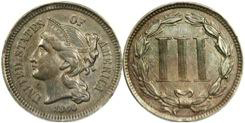
Tying back into the previously-mentioned three-dollar piece and the half-dime, the three-cent piece was a short-lived (but fairly popular) coin that was minted between 1851 and 1889. The original three-cent coin was made of silver and was introduced in response to the cheap stamps that also led to the creation of the three-dollar piece. One coin was equal to one stamp, which was simple and convenient. (You would need sixteen of them to buy a single stamp today.)
But silver hoarding became common during the Civil War, which caused circulation problems. Luckily, the same nickel lobbyists who pressured for the half-dime replacement had also gotten Congress to introduce an alternative: the three-cent nickel. For the first few years of its life, the "nickel" actually came in both three-cent and five-cent varieties.
However, since the three-cent nickel was about the same size as a dime, the two often got confused. In addition, the price of stamps changed once again, leading to the three-cent coin becoming largely unnecessary, and so it was phased out in 1889.
9. TWO-CENT PIECE
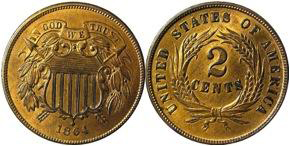
Another experimental coin, the two-cent piece was mostly just a stopgap piece to be used to combat coin shortages until the Civil War ended. When the war did end, the U.S. Mint just decided to keep making them and see if anyone used them. They didn't, and between the initial 1864 run and the final 1873 series, production dropped from 20 million coins to just 600. As in 600 total.
Ironically, they might have been very popular in 1883, when the Postal Service once again performed a now-unthinkable act and dropped the cost of stamps down to two cents (where they stayed, except for a short time during WWI, until 1932).
10. HALF-CENT
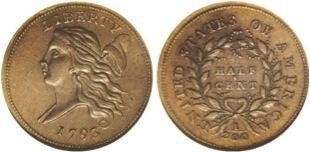
Although Americans now only see fractions of a cent at gas stations, they used to be much more common. From 1793 to 1857, the U.S. Mint produced a half-cent — the smallest value coin in American history. Fractions of a cent, which are technically called mills, were actually very useful when small denominations of currency actually had some value to them.
In fact, some states even produced one mill tokens, worth 1/10 of a cent, at various points in history. These tokens, which were not official U.S. coinage (hence the word token instead of coin), were most often used for paying sales tax on purchases.
More from Mental Floss...
* 7 geeky-cool translations of Hamlet
* 5 unseen parts of NYC's subway system
* 9 historical methods for determining the sex of an unborn baby
-
 Zimbabwe’s driving crisis
Zimbabwe’s driving crisisUnder the Radar Southern African nation is experiencing a ‘public health disaster’ with one of the highest road fatality rates in the world
-
 The Mint’s 250th anniversary coins face a whitewashing controversy
The Mint’s 250th anniversary coins face a whitewashing controversyThe Explainer The designs omitted several notable moments for civil rights and women’s rights
-
 ‘If regulators nix the rail merger, supply chain inefficiency will persist’
‘If regulators nix the rail merger, supply chain inefficiency will persist’Instant Opinion Opinion, comment and editorials of the day